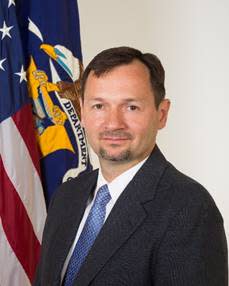Viewpoint: Remember Oklahoma workers whose jobs claimed their lives

In March 2020, José Asunción Hernandez Lozano headed to work like he did many times before. Ginning season had ended, and a supervisor directed José and eight other day-shift gin workers to use brooms, hoes, rakes, compressed air hoses and air nozzles to remove debris from the gin roof, 24 feet high. Using a forklift, the employees were then lifted on a platform to the lower roof of the gin building. As Lozano, an H-2B visa worker, cleaned next to a skylight on the roof, the edge was obscured with debris and gave way when he stepped on it, causing him to fall and die on impact.
This is an example of a case where simply using fall protection, which is required by the Occupational Safety and Health Administration for this type of work, could have prevented this tragedy. Sadly, we see this way too often.
Each year, thousands of workers of all ages die needlessly — and their families, friends and communities are left to grieve — when required safety and health standards are ignored. In 2020, about 5,000 workers died in the U.S. in work-related deaths, including many who succumbed to workplace exposure to COVID-19. Tens of thousands more die of work-related diseases.
In Oklahoma alone in 2020, 38 workers lost their lives. On average, 13 workers die each day in the U.S.
The wounds suffered by those left behind are deepened by the reality that most, if not all, of these workplace deaths were avoidable — if only employers had established and ensured that appropriate safety precautions are followed.
Each year, on April 28 on Workers Memorial Day, the U.S. Department of Labor’s OSHA and workplace safety advocates across the nation remember those whose lives ended because of the work they did. Oklahoma issued a proclamation declaring April 28 “Worker Memorial Day in Oklahoma.” The Skydance Bridge in downtown Oklahoma City will be illuminated in the colors purple and yellow in honor of those who have lost their lives in workplace events.
The COVID-19 pandemic made going to work riskier than ever before, particularly in industries where people — often low-wage workers, many of whom are women and people of color — performed essential work to protect us and ensure our well-being. Those in industries such as health care, meatpacking, public transportation, retail and food service risked — and many lost —their lives to provide critical services to others and to support themselves and their families.
The day allows us to mourn these losses and how their absence affects those who shared their lives. They were our family members, our friends, our co-workers and neighbors.
Workers Memorial Day reminds us that like life, workplace safety and health must never be taken for granted. These tragedies and the causes should inspire us all to demand that workplace safety be a fact of life and never an afterthought.
We must strive to ensure safety and health standards are in place and that they are understood and followed by employers and workers alike. Workers have the right to safe and healthful workplaces, and employers have the legal obligation to ensure that they provide them.
OSHA professionals work every day to assist employers across the nation in their efforts to provide a safe and healthful workplace. Our compliance assistance outreach helps businesses employing more than 1.3 million U.S. workers nationwide to prevent workplace injuries and illnesses. Through strategic alliances with large employers, trade associations, organized labor, and our Voluntary Protection Programs, we help to empower businesses to employ customized safety and health approaches and make meaningful and substantial improvements.
As of April 2022, there were 36 Voluntary Protection Programs’ participants in Oklahoma. Injury and illness data collected at VPP sites shows that — on average — injury and illness rates at these locations are about 50 percent or lower than the national averages for their industries.
At the national level, OSHA maintains federal standards for workplace safety, including specific regulations based upon common industry risks and workplace hazards. In response to the pandemic, the agency implemented temporary standards to protect the most vulnerable workers and worked with specific industries to combat the spread of the virus.
Currently, OSHA is developing an infectious disease standard that will protect workers from airborne infectious diseases, as well other viruses that exist today and those we may face.
Workers are the backbone of our national economy. In the last two years, we learned how America’s society and culture depend on people who go to work and how we should never take those willing to trade hard work doing difficult and, sometimes dangerous, jobs for granted. We at OSHA know we must do more to ensure we help protect every worker and listen to their concerns for safety, regardless of skin color, language spoken, citizenship status, gender or age.
We must do more to compel our nation’s employers to commit themselves to protect their workers’ safety and health, no matter the cost. And we must hold those employers who choose profit over people’s safety accountable for their inactions — as the law allows.
As we mark another Workers Memorial Day, remember that no worker should ever have to risk their life in exchange for their paycheck. Also remember that each of us has a role to play in making the workplace safe. We owe José and the workers in Oklahoma who have lost their lives, and the tens of thousands of others we honor today at least that much.
A virtual Worker Memorial Day event for Oklahoma may be viewed at 10 a.m. Thursday, April 28.
Eric S. Harbin is the regional administrator for OSHA in the Dallas Region.
This article originally appeared on Oklahoman: This Thursday, remember Oklahoma workers whose jobs claimed their lives
